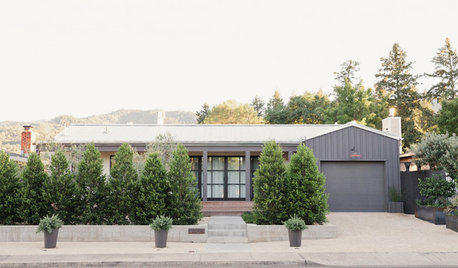Hardiness of Azara microphylla Variegata
hemnancy
17 years ago
Related Stories

PLANTING IDEASHedgers and Edgers: The 10 Best Shrubs for Structure
Find out about top picks for privacy screens, formal hedges and low-growing borders
Full StoryHas anyone grown or seen Azara microphylla Variegata? I'm wondering how it does since I don't usually buy plants only hardy to 10 to 20*F. It is a lovely glossy-leaved variegated plant that also has fragrant flowers that smell like chocolate or vanilla, and even edible but very small berries.
http://www.forestfarm.com/search/closeup.asp?PlantID=azmi102


gardengal48 (PNW Z8/9)
Embothrium
Related Professionals
Arlington Landscape Architects & Landscape Designers · Havre de Grace Landscape Architects & Landscape Designers · Roxbury Crossing Landscape Architects & Landscape Designers · Cockeysville Landscape Contractors · Doctor Phillips Landscape Contractors · Dudley Landscape Contractors · Ramsey Landscape Contractors · Riverview Landscape Contractors · Shirley Landscape Contractors · Brooklyn Fence Contractors · East Haven Fence Contractors · Issaquah Fence Contractors · Millbrae Fence Contractors · Voorhees Fence Contractors · West Covina Fence ContractorshemnancyOriginal Author
gardengal48 (PNW Z8/9)
hemnancyOriginal Author
gardengal48 (PNW Z8/9)
Embothrium
Embothrium
hemnancyOriginal Author
JAYK
Embothrium
ian_wa
hemnancyOriginal Author
grant_in_seattle
Embothrium
hemnancyOriginal Author
lakebill88_comcast_net
Embothrium